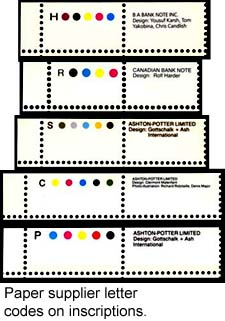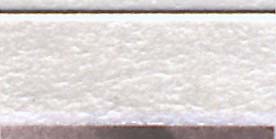Study Notes
Checklists
Karsh/Wilding/Cameo:
![]() Karsh
Karsh
![]() Wilding
Wilding
![]() Cameo
Cameo
Centennial:
![]() Centennial
Centennial
Caricature & Landscape:
![]() Caricature
Caricature
![]() Landscape
Landscape
![]() Cityscapes
Cityscapes
Environment:
![]() Flowers
Flowers
![]() Trees
Trees
![]() Street Scenes
Street Scenes
![]() National Parks
National Parks
![]() QE II
QE II
![]() Parliament
Parliament
![]() Maple Leaf
Maple Leaf
Artifact & Parliament:
![]() Low-value
Low-value
![]() Medium-value
Medium-value
![]() Parliament (bklt/coil)
Parliament (bklt/coil)
![]() Parliament (1st class)
Parliament (1st class)
Mammals & Architecture:
![]() Low-value
Low-value
![]() Medium-value
Medium-value
![]() Architecture
Architecture
![]() QE II
QE II
Berries,
Fruit & Flag:
![]() Low-value
Low-value
![]() Medium-value
Medium-value
![]() Flag (first class)
Flag (first class)
![]() Flag (vending bklt)
Flag (vending bklt)
![]() Flag (self-adhesive)
Flag (self-adhesive)
![]() Flag (coil)
Flag (coil)
Trade, Leaf & Wildlife:
![]() Low-value Trades
Low-value Trades
![]() Medium-value Trades
Medium-value Trades
![]() 1st class/Medium-value Maple Leaf
1st class/Medium-value Maple Leaf
![]() 1st class Leaf Coil
1st class Leaf Coil
![]() Medium-value Wildlife
Medium-value Wildlife
![]() High-value Wildlife
High-value Wildlife
Insect, Flag, Leaf & Flower:
![]() Insects 2007-
Insects 2007-
![]() Flag (vert) 2004-
Flag (vert) 2004-
![]() Maple Leaf 2003-2004
Maple Leaf 2003-2004
![]() Flowers
Flowers
Other
Updated Feb 17/08
This discussion is limited to the "modern-day" paper used for Canadian stamps - that is, during the Elizabethan era (1952-present).
There are three areas of discussion:
paper texture (ribbed)
paper surface (coated)
paper supplier
Most of the stamp paper used to print Canadian stamps has a "smooth" appearance. There are, however, some issues that exist with a "ribbed-effect" paper. This paper has the distinct appearance of horizontal (or vertical) "lines" across the paper (visible from either the front, back, or both sides of the stamp).
The Wilding-era stamps include a half-dozen stamps that come on both horizontal and vertical ribbed paper (this is due to a rotation of the printing plates part way through the life span of the stamps).
There are also a number of stamps in the Caricature & Landscape series that come with ribbed-effect paper varieties. As well, there are a couple of issues in the Environment series that have this ribbed paper as well.
Until the 1980's, most of Canada's stamps were printed on an uncoated paper. This paper appears rough and dull. As printing techniques evolved from single-colour, engraved stamps to multi-coloured stamps printed by lithography or photogravure, new paper coatings were required to aid in the application of the ink to the paper surface. The result was coated paper. This paper has a shiny, glossy/glazed appearance.
A few Canadian definitive stamps exist on both uncoated and coated paper.
The term "coated", as used here, should not be confused with the paper manufacturer, Coated Papers, which began supplying paper for Canadian postage stamps in late 1990 (see discussion below).
From 1972 to early 1983, Abitibi-Price was the sole supplier of paper for Canadian postage stamps. At that time, they decided on short notice to discontinue producing this paper. For a period of time, Canada Post was forced to use paper from non-Canadian paper mills.

 Quite a few definitive stamps printed since 1983 have been reprinted on different paper stock. For collectors, the need to identify the different paper supplier is an important requirement (in one instance, the 74c Wapiti stamp issued is 1988, it could mean the difference between the common $2.50 stamp vs. a very rare $900.00 stamp!). In an effort to satisfy collector's needs, Canada Post has included a single-letter code as part of the plate inscription found on the imprint of each of the four corners of philatelic stock ("field" stock, or panes send to most post offices, has the plate inscriptions either trimmed off, or not printed at all).
Quite a few definitive stamps printed since 1983 have been reprinted on different paper stock. For collectors, the need to identify the different paper supplier is an important requirement (in one instance, the 74c Wapiti stamp issued is 1988, it could mean the difference between the common $2.50 stamp vs. a very rare $900.00 stamp!). In an effort to satisfy collector's needs, Canada Post has included a single-letter code as part of the plate inscription found on the imprint of each of the four corners of philatelic stock ("field" stock, or panes send to most post offices, has the plate inscriptions either trimmed off, or not printed at all).
The table that follows provides some general guidelines on identifying the different paper stock for both mint and used stamps. Note, however, that two different paper stocks may appear very similar, particularly for a single specimen.
| Mint (gum) | Used (back of stamp) | 1st seen | Inscription "code" (letter) |
|
| Abitibi-Price | clear (creamy look on the Artifact-series stamps) | smooth | none | |
| Harrison | blue-green tinge; curls | back of stamp has horizontal "lines" when viewed against a darker background (looks textured, almost like ribbed paper | Aug 83 | H |
| Clark | clear; Artifact-series stamps may curl | smooth | Dec 83 | none |
| Rolland | slight curl; mildly flrsc (some issues) | smooth | Aug 85 | R |
| Slater | light cream-coloured gum | looks like a mixture of "pulp" and has a darker tone (beige). Slater is slightly darker than Coated. |
Feb 88 to Jan 92 | S |
| Coated (name changed to Tullis Russell Coatings, Jan 98) |
slight blue-green tinge (sometimes it is pale) | Dec 90 | C | |
| Peterborough | greyish | very smooth, white, crispy | Feb 88 | P |
| Fasson | (self-adhesive) | very smooth, in comparison to Coated | F | |
| Spicer | (self-adhesive) | Dec 07 | S |
Notes:
- there is no noticeable difference between Abitibi-Price and Clark papers, particularly on used copies.
- for used singles, Slater and Coated papers are almost identical.
Here is an image (exaggerated a bit to show details) of TRC (Coated) paper (on the front of the 49c QEII definitive, Sc. 2011):

© 1999-2013, 2014 Robin Harris
Adminware is a trademark of Adminware Corporation.
